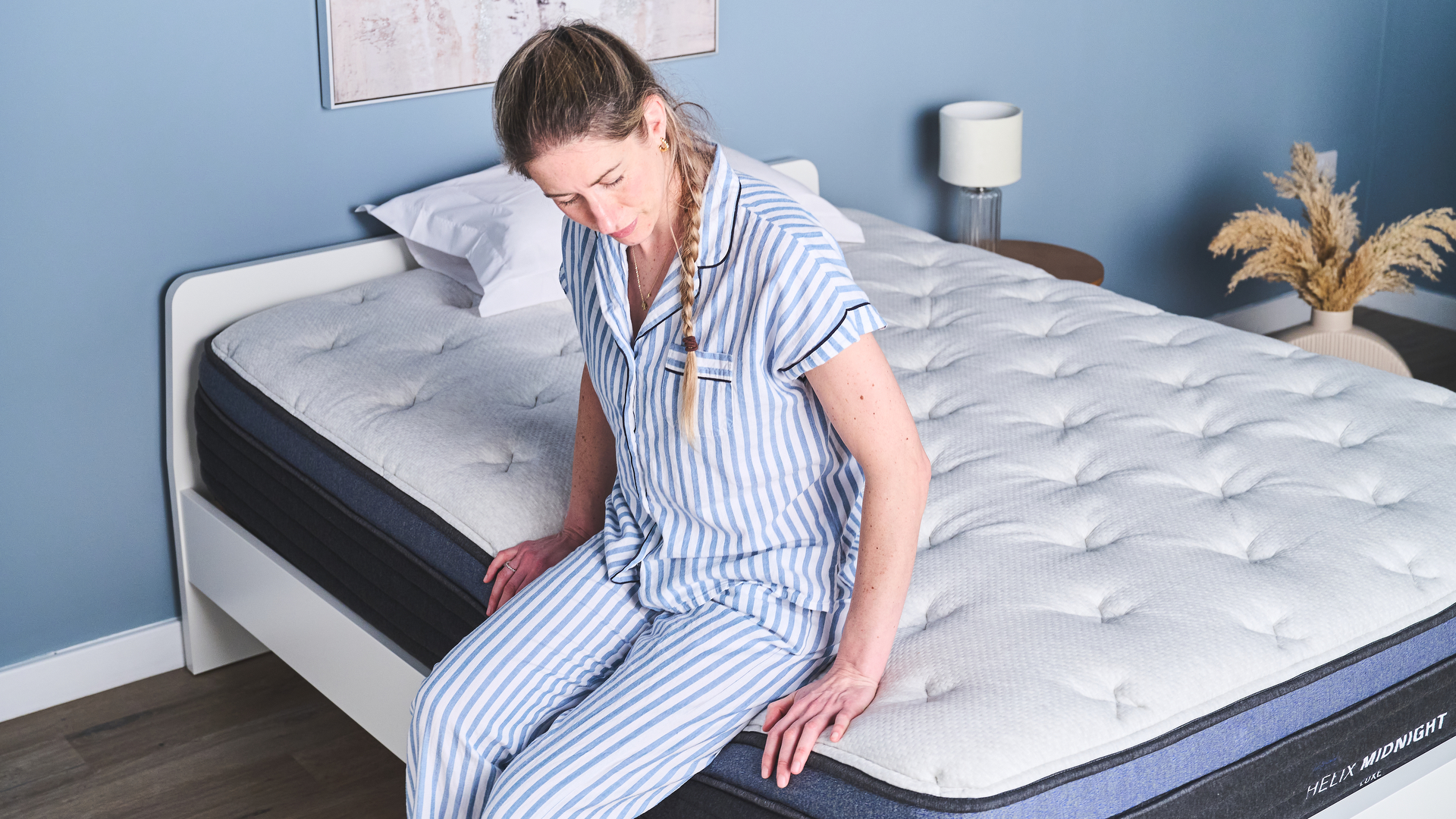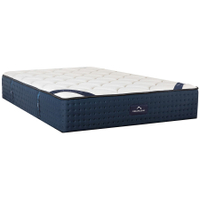What are roll up mattresses and are they any good?
We look at the pros and cons of roll-up mattresses and how they differ to floor beds and mats

Roll-up mattresses are a convenient choice for anyone buying a bed. Taking a traditional mattress, compressing it and rolling it until it fits into a new box, rolled mattresses have become increasingly common. But if you're looking for a new bed, you might be wondering just what you're getting with a roll-up mattress.
Many of the beds in this year's best mattress guide are classed as roll-up mattresses. They can provide all the support and pressure relief of a traditional flat mattress, but with a much easier delivery and set-up. However, despite what the name might suggest, once a roll-up mattress has been unboxed, it can't be re-rolled.
In this guide, we'll explore exactly what a roll-up mattress is and how it differentiates from a foldable mattress. We'll also take a look at the pros and cons of a roll-up mattress, to help you decide if this is the right style of bed for you. Let's get started.
What is a roll-up mattress?
A roll-up mattress is a traditional mattress that has been flattened, vacuum-packed, rolled up, and placed in a box for delivery. When the mattress has been unrolled and removed from its packaging, over the course of the next few hours or days it will gradually expand until has returned to its original size. When the mattress has fully expanded, it can't be rolled up again.
All the beds in our best mattresses in a box guide are roll-up beds. It's a highly versatile packing method that can be used in a range of bed types, meaning you can find a roll-up mattress to suit almost every sleep style.
However, some people use the term 'roll-up mattress' to refer to folding beds, floor mats, or Japanese futons. These bed types are thinner than a traditional mattress, capable of being 'rolled-up' or folded away at the end of the day without damaging the interior

Roll-up mattress v folding beds: What’s the difference?
Once a roll-up mattress is out of the box and has expanded, it can't be rolled up again and should be kept flat. Roll-up beds are designed to be used with a compatible bed frame. Some people do choose to forgo the frame and use a roll-up mattress on the floor, but we don't recommend it.
In comparison, rollaway sleep mats and folding beds are designed to be packed away in the morning. The thin, often foam-based build can be folded or rolled smaller. These styles of bed, like Japanese floor mattresses and futon mattresses, are useful if you have limited space in a bedroom. And while you shouldn't place them directly on the ground, they're often used with thin floor mats rather than bulky bed frames.
Attempting to re-roll an expanded roll-up mattress can damage the interior structure. If you do want a bed you can easily store, check out our guide to rollaway beds vs foldable beds vs Japanese floor mattresses.
Roll-up mattresses: Pros
Roll-up mattresses have become popular because of their ease-of-use. Boxed and compact, roll-up mattresses are more convenient to move than traditional mattresses, which are delivered flat.
This boxing makes the set-up a lot easier if you haven't paid for white glove delivery. You can transport a roll-up mattress from the front door to your bedroom on the fourth floor without getting stuck navigating awkward corners. And once it's on the bed frame, you simply have to take the mattress out of its packaging and wait for it to expand.

Once your mattress is back to full-size, you'll be getting all the support of a traditional mattress. In comparison, foldaway beds typically lack the full-body pressure relief that an adult body needs for long-term use.
Pretty much any type of mattress can be rolled and boxed, including memory foam, hybrid, innerspring, and latex mattresses. There's a roll-up mattress to suit almost every sleep style and budget, and because roll-up beds tend to be sold online, you have a big market to explore. If that seems a little overwhelming, our best memory foam mattress guide and best hybrid mattress guide can get you started.
Roll-up mattresses: Cons
There are some downsides to a roll-up mattress. For a start, they can't be used right away. Once the mattress has been unrolled, it will take several hours to expand – generally between seven and 72 hours. You need to wait until the mattress has fully expanded before you can sleep on it.
Despite what the name might suggest, a roll-up bed is difficult to store. Once expanded, roll-up mattresses need to be kept flat, preferably on a compatible bed frame. They can't be conveniently packed away like a foldable bed.
We've touched on the variety of roll-up beds, but the best luxury mattresses are often delivered flat. This is because these beds are typically tall and made with incredibly durable materials, so they aren't good candidates for the compression required to pack a roll-up mattress.
Finally, let's talk about mattress off-gassing. This can be an issue with flat and roll-up mattresses, but keeping a mattress in a box can cause the scent to become more pungent. You might need to air a roll-up mattress for several days to completely disperse the smell.

Are roll-up mattresses worth it?
Roll-up mattresses have become increasingly common, with many of our favorite sleep brands offering this style of bed. Roll-up mattresses are available in a range of budgets and build qualities, and they can suit a lot of different sleep styles.
With that in mind, a roll-up mattress can absolutely be worth the money. Some of the best beds are roll-up mattresses, and the vacuum-packing process doesn't effect the support or integrity of the interior. There are some bad roll-up mattresses, but there are also terrible flat mattresses – the roll-up process isn't an indication of the overall quality of the bed.
A roll-up mattress is generally more expensive than a foldaway bed or folding mattress. However, they also tend to have a better build quality and durability, as well as increased support. But they do lack the easy storage of a bed you can roll and re-roll.
When buying a roll-up mattress, we recommend checking for a sleep trial. You often can't try a roll-up mattress before it's been delivered, unfurled, and expanded, at which point the feel will change dramatically. A sleep trial lets you test the mattress for a set time period, to see if it's right for you
Finally, there are frequent mattress sales on roll-up beds. The biggest savings occur around the major sale days (such as Black Friday) but you can spot deals throughout the year.
The top 3 roll-up mattresses on sale today
1. DreamCloud Hybrid Mattress: was from $839 $419 at DreamCloud
The DreamCloud is one of our favorite roll-up mattresses, delivering a feel similar to the best flat mattresses in a more convenient (and affordable) package. Best for back and stomach sleepers, we were impressed with the overall quality during our DreamCloud Mattress review. There's an evergreen sale at DreamCloud, taking a queen down to $665 (was $1,332) – excellent value for a bed of this standard.
2. Nectar Memory Foam Mattress: was from $349 $699 at Nectar
In our Nectar Memory Foam Mattress review we found this all-foam roll-up mattress has a good combination of softness and support that's best for side sleepers – but you might be waiting a while for it to expand. Nectar mattresses are always on sale, and the current 40% off deal reduces a queen to $649 (was $1,099). This is a great price for an all-foam bed of this quality, and you have a 365-night trial to test it out.
3. Helix Midnight Luxe mattress: was from $1,373.80 $1,030.30 at Helix Sleep
The Helix Midnight Luxe demonstrates that even high-quality beds can be roll-up mattress. We found this luxurious bed provides plush support for side sleepers in our Helix Midnight Luxe mattress review. Helix sales are evergreen, with a 20% off sale running for most of the year. There are bigger sales around the major holidays – right now, a queen is $1,780.40 (was $2,373.80).
Who should buy a roll-up mattress?
✅ You want an easy set-up process: By reducing the size of a large mattress to a simple box, roll-up mattresses have an incredibly convenient delivery and set-up process. You can carry a roll-up bed up stairs, around corners, and even in elevators with no uncomfortable pivoting.
✅ You want a wide range of mattresses to choose from: There are so many types of beds available as roll-up mattresses that you can find an option to suit almost every sleep style, whether you want all-foam or hybrid, your a front sleeper or a side sleeper, or need extra support for a heavier build.
✅ You want to shop online: The majority of mattresses sold online are roll-up beds, and you can find impressive variety as well as frequent sales and convenient delivery options. But if you are buying online, make sure the bed comes with a sleep trial, so you can test it before committing.
Who shouldn't buy a roll-up mattress?
❌ You want to pack-away your bed in the morning: Once a roll-up mattress has been unrolled, it can't be rerolled – you have to keep the bed flat to maintain the interior integrity. If you want to store your bed between uses, look for a foldaway mattress instead.
❌ You want a plush, deep mattress: While most mattresses can be vacuum packed into a roll-up mattress, the thickest, most luxurious beds typically have to be delivered flat.
❌ You need to use the bed right away: It can take up to 72 hours for a roll-up mattress to expand, which can feel like a long waiting time. A good roll-up mattress should last for at least six years, so this waiting period is only a small part of the overall longevity, but it can still be a frustrating pause.
Sign up to get the BEST of Tom's Guide direct to your inbox.
Get instant access to breaking news, the hottest reviews, great deals and helpful tips.

Ruth is a staff writer at Tom’s Guide, covering all things mattress and sleep. She has a deep interest in the link between sleep and health, and has tried enough mattresses to know the right bed really can make a difference to your wellbeing. At Tom’s Guide she writes to help people sleep better, from how-tos to the latest deals to mattress reviews, and has interviewed an array of specialists who share her passion. Before joining the team at Tom’s Guide, Ruth worked as a sleep and mattress writer for our sister website, TechRadar.



